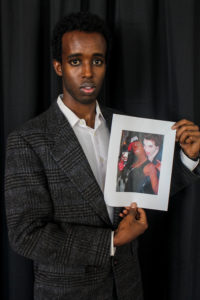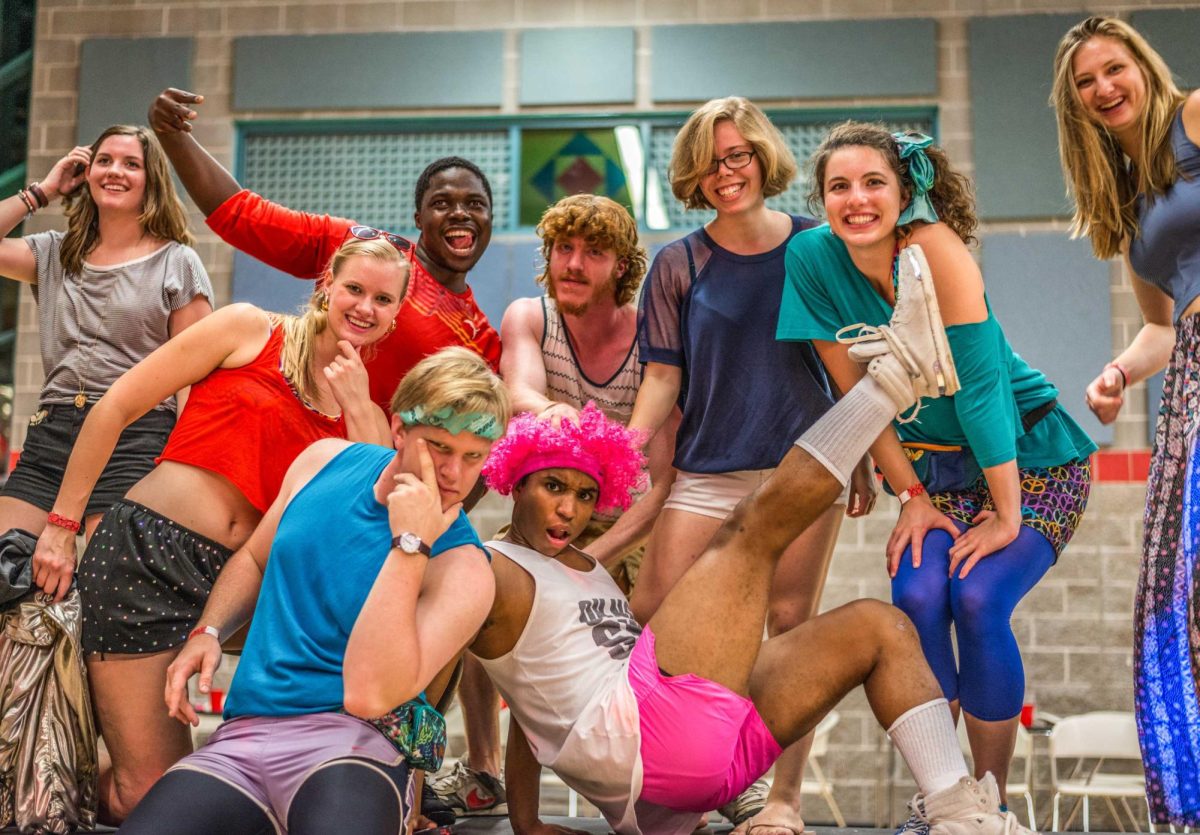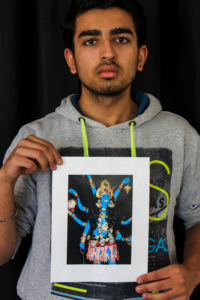
When Hameed Weaver ’17 was a first year, he dressed up as a Somali pirate for Halloween.
“Some people thought it was funny [when I told them what I was],” Weaver said. “But then I realized I probably shouldn’t have done that.”
Weaver shared this story at a community lunchtime discussion called “My Identity, Not Your Costume” on Wednesday, hosted by the Intercultural Affairs Office. The event was accompanied by a poster series of the same name which featured students from the Multicultural Leadership Council holding photos of culturally insensitive Halloween costumes. Intercultural Affairs thought the week before Halloween was an essential time to provide programming on racist or appropriative images.
“This is a campaign that’s on a lot of college campuses,” said Jordan Brooks, assistant director of cultural affairs. “We brought [this issue] to our MLC group and were like ‘Look, we know this is Halloween time, we know this is typically when things go down. What’s the best way for us to get a message out to the student body?’”
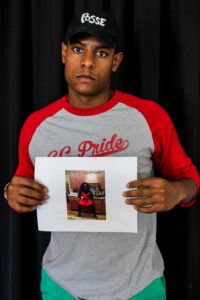
Do Grinnellians really wear appropriative costumes?
At a progressive liberal arts institution like Grinnell, it’s easy to think that racist costumes or events simply don’t happen. However, student experience shows that these problematic portrayals do exist, although often in an implicit manner.
“Dressing up as Pocahontas is a common one,” said Nomalanga Shields ’18. “Those people weren’t meaning to be racist, but they … had the headgear and the whole Native American getup. If you decide ‘Hey, I’m Mulan or Aladdin,’ and then you actually wear it, you are the character, but you’re also embracing this culture. That’s real people.”
This issue extends beyond the night of Oct. 31. Some deep-rooted Grinnell traditions may contain semblances of cultural appropriation or insensitivity, especially when students assume certain identities without acknowledging the history behind them.
“I’ve seen it on Cinco de Mayo, or ‘Drinko de Mayo,’” said Simone Downs ’17, who worked as an Intercultural Affairs intern last year. “I’ve seen people wear the sombreros, the mustaches, all that stuff. They’re very surface-level representations. … It’s taking a holiday and whittling down a person’s ancestry, ancestral ties and culture, and making it into an image.”
Campus traditions that celebrate gender fluidity also run the risk of warping into parties lacking understanding of the history. Mary B. James, an annual party wherein students dress up outside of their normal gender identity, was mentioned as becoming particularly distorted in recent years.
“I was talking to some seniors my first year about how Mary B James changed over the years,” said a student who wishes to remain anonymous at the “My Identity, Not Your Culture” event. “It used to be an appreciation of wearing different identities than you normally would during the day, and now it’s like ‘let’s get drunk and dress up like girls and dress up as guys and let’s go party.’ It’s without knowing the history behind the event and why they’re doing it.”
Outside the realm of costumes and images, recent events such as the appearance of anonymous racist messages on Yik Yak in February of 2015 demonstrate that the College is not immune from ongoing racism pervading the world outside the Grinnell bubble.
“That, to me, was very shocking,” said Professor Raquel Greene, Russian, about the Yik Yak controversy. “Once I understood … that [Yik Yak] operates within a certain mile radius, that it was probably students from the College who were sending those messages, that really hurt me. If it’s people from the town as opposed to campus, you can rationalize that to a certain extent. But I think that you have to have a very different conversation when you realize that it’s one of your own, that it’s someone we’ve embraced by inviting them to join in this community.”
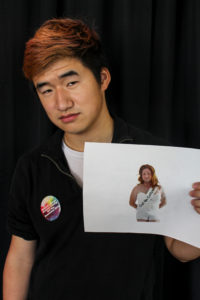
What’s cultural appropriation?
“With cultural appropriation, you’re taking something that is not yours and then using it without acknowledging its origins or celebrating the culture from which it came,” said Lakesia Johnson, chief diversity officer, at the community discussion.
As the “My Identity, Not Your Costume” poster series demonstrates, cultural appropriation creates caricatures not only of racial or ethnic groups, but also of genders, sexual orientations and religions. The question remains, however, of whether cultural appropriation is always a productive or accurate term in these conversations.
“To put on blackface, to invoke a past that was intended to be hurtful, … I wouldn’t call that cultural appropriation, I would call that racism,” said Professor Katya Gibel Mevorach, Anthropology. “Putting it in the language of cultural appropriation presumes originality, and I don’t believe in that.”
To illustrate this point, Gibel Mevorach brought up Elvis Presley and his music’s origins in southern sharecropper culture, a culture shared by blacks and whites alike.
“What happens is the music industry then markets Elvis Presley as a white singer, and we get the separation of rhythm and blues and rock and roll. That’s not cultural appropriation, but it is one person pockets the money and the other person doesn’t. That’s racism.”
Gibel Mevorach expressed her concern that if terms like cultural appropriation are so rigidly ingrained in students’ vocabulary, “Anything which contradicts that is absent. … The term culture won’t get examined.”
Nonetheless, many Grinnell students feel like the discussions around cultural appropriation on campus have allowed them to analyze their own actions and better understand how they might impact others.
“Before coming to Grinnell, I had no idea what cultural appropriation was,” Weaver said. “Then I learned about cultural appropriation. You learn so much coming here that I think it’s good to have these talks, especially for first-year students who might not have even heard the term before.”
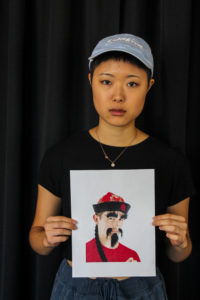
What’s going on outside of Grinnell?
On Sept. 15, two white students from Kansas State University sent a Snapchat photo in black mud masks, and included a racial slur. A few days later on Sept. 21, similar racist photos emerged from the University of North Dakota. Such occurrences seem to follow similar racist traditions at large universities, such as a Mexican-themed party at Princeton last month and a Kanye West-themed party at UCLA last year. However, Brooks cautions against associating racist caricatures solely with big institutions, Greek life or athletics.
“When I was in college at a school with 2,100 students we had an incident where a student wore blackface as a costume,” Brooks recalled. “I think your ability to hide is greater at larger institutions. You have the fraternities who have their houses, you have the bars and the off campus places that are in more abundance than they are here.”
Moreover, Brooks thinks that the underlying issue is not uniquely linked to campuses.
“College is nothing more than a reflection of our greater society. Because the greater society still doesn’t fully show respect for people’s identities, people come here and you see it happen on college campuses.”
Americans are understandably shocked that racist caricatures still pop up in our culture. At the same time, sensitivity and political correctness around this issue is fairly unique to America in comparison with countries.
“In other international contexts, and I’ll just use Russia as an example, we see these images and they’re not just confined to Halloween or certain times of the year. You see them in mass marketed objects,” Greene said. “As an American, when I see them, it’s just very shocking to me. There’s a level of political correctness that we practice or that we try to practice in the States that you just don’t see everywhere.”
To illustrate this point, Greene pointed to examples in Russian media wherein President Obama’s blackness is used to advertise products ranging from tanning salons to chocolate ice cream. She expressed that although there are voices in Russia speaking against racist caricatures, “by and large, people would just say, ‘Well, it’s humorous. Don’t take it so seriously.’” Thus even though America still has a ways to go in its combat of racism, its larger racial diversity lends promise to its speed of progress.
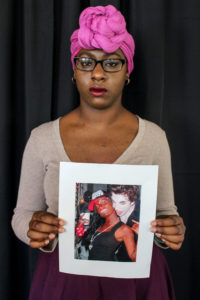
How can Grinnell combat cultural appropriation?
This week’s programming provides one way to help start the conversations that students and faculty agree are important to improving campus culture around race.
“Even if you hadn’t seen people on campus dressing in racialized costumes, I think it’s important just to talk about it,” Downs said. “The discussions are important both for one’s own reflection, but also to think as a community.”
At the same time, Downs and other students feel as if efforts to combat racism and racist images must be taken up by all individuals and groups on campus, not just those organizations who hold social justice as their mission statement, like Intercultural Affairs.
Gibel Mevorach agreed that faculty should further incorporate the culture of prejudice in the curricula.
“I think our curriculum has to be more interconnected with certain themes,” Gibel Mevorach said.
All of these efforts should ideally come together to increase students’ ability to question race and culture and how they interact on campus. As Downs said, “That’s the only way we can start to make connections and agitate change.”
